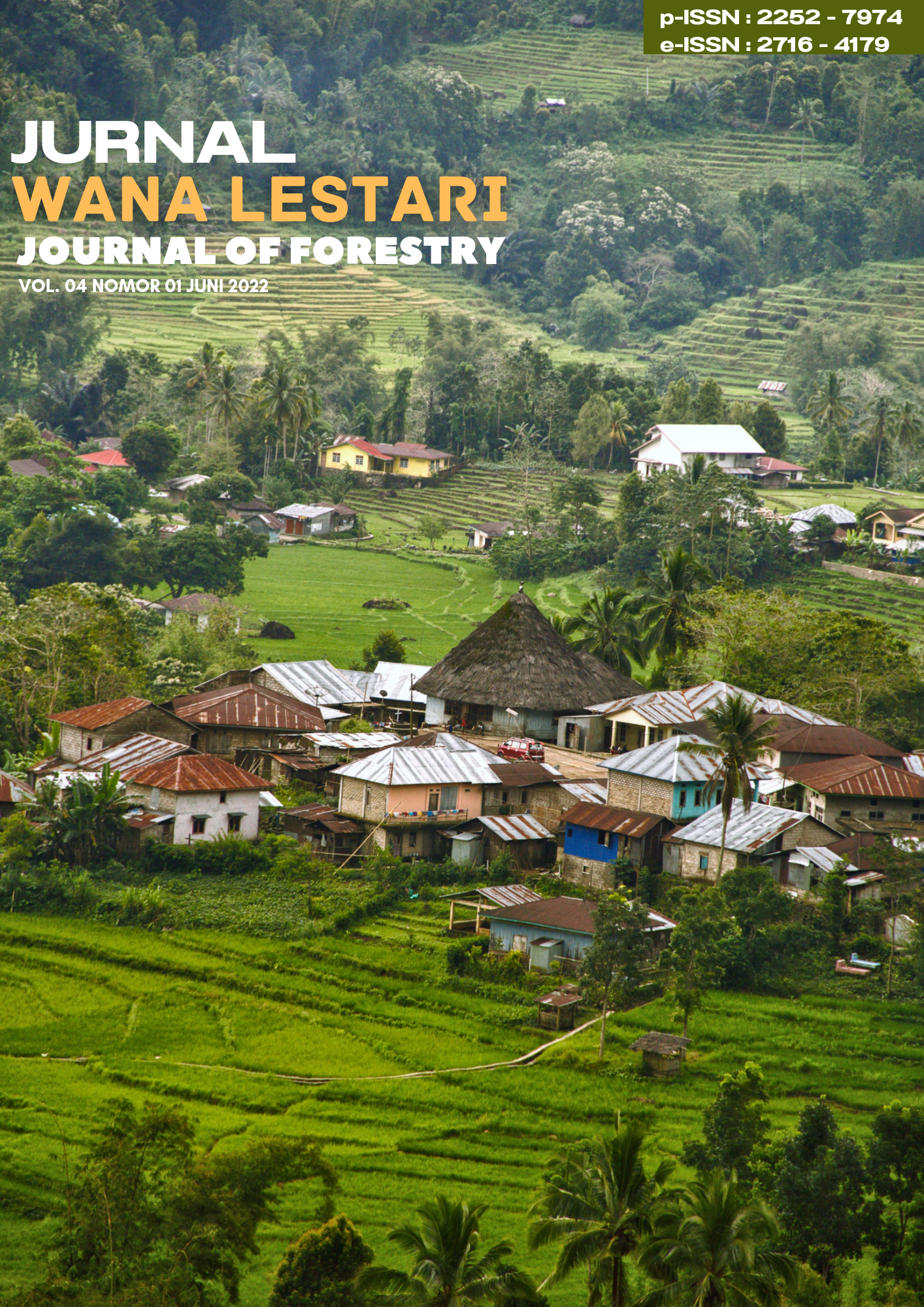STUDY OF FOREST ETNOBOTANY BY THE COMMUNITY ABOUT THE MBELILING PROTECTED FOREST AREA, WAE VILLAGE, PASSED, SANO NGGOANG DISTRICT, WEST MANGGARAI REGENCY
Abstract
The use of forest ethnobotany in the form of medicinal plants by the people of Wae Lolos Village, Sano Nggoang District, West Manggarai Regency has long been used as an alternative to traditional medicine. This study aims to determine the types of medicinal plants used by the community based on the type of disease. The method used is vegetation analysis using the transect line method, as many as 81 plots with plot sizes of 20 x 20 m, 10 x 10 m, 5 x 5 m and 2 x 2 m. The data collected is primary data and secondary data. Primary data was obtained through interviews with 3 key informants who were determined by Snowball Sampling to determine the use of various types of medicinal plants by the community around the Mbeliling protected forest area and direct observation by conducting a vegetation analysis while secondary data were obtained in the form of data from the Central Bureau of Statistics of West Manggarai Regency and data from the Central Bureau of Statistics of West Manggarai Regency. from the Wae Lolos Village Office. Based on the results of the study, there were 27 types of medicinal plants in the Mbeliling Protected Forest Area. The results of the analysis at the seedling level of medicinal plants obtained 23 species of medicinal plants with the highest IVI of 26.42%, the sapling level obtained 12 species of medicinal plants with the highest IVI of 35.75%, the pole level obtained 10 species of medicinal plants with the highest IVI of 55.76% and tree level obtained 9 types of medicinal plants with the highest IVI 62.76%. The most common types of medicinal plants used to cure diabetes are 14% and the lowest are cough, liver, back pain, malaria, ulcers, stomach, gout, migrant cysts, syphilis, ulcers, flue, stomachache, infertility, epilepsy. and seizures with a percentage of 4%.
Downloads
Copyright (c) 2022 Wana Lestari

This work is licensed under a Creative Commons Attribution-ShareAlike 4.0 International License.

 Aleksandro Alianto Ndula(1*)
Aleksandro Alianto Ndula(1*)







